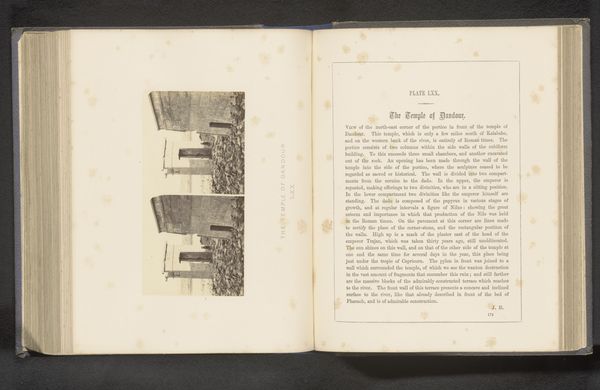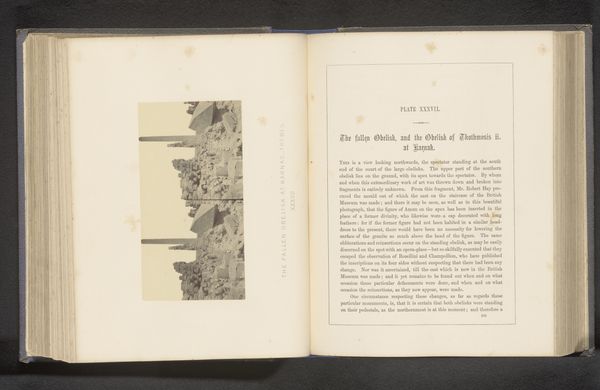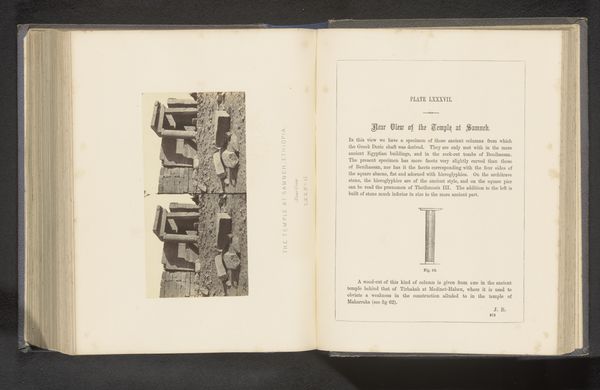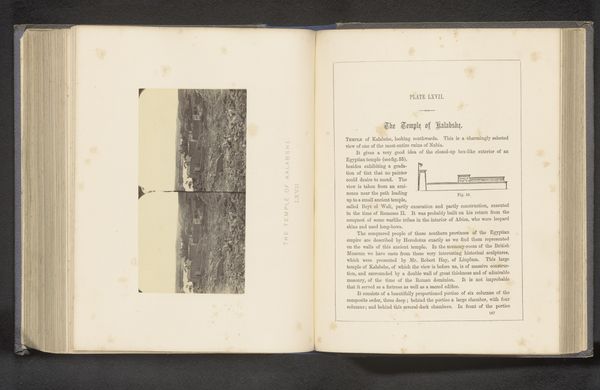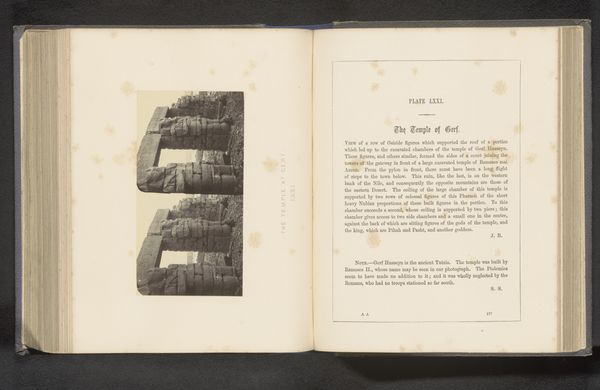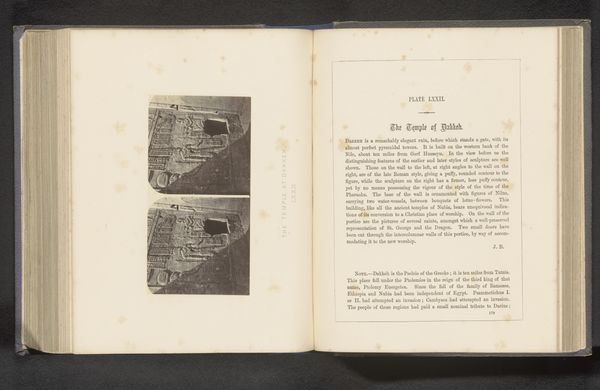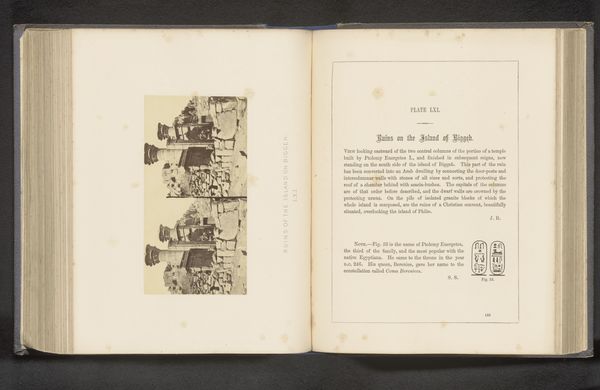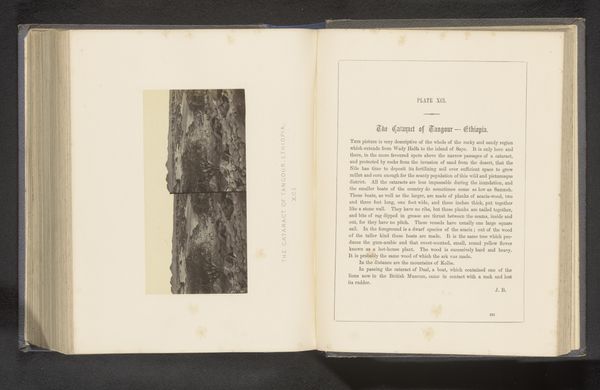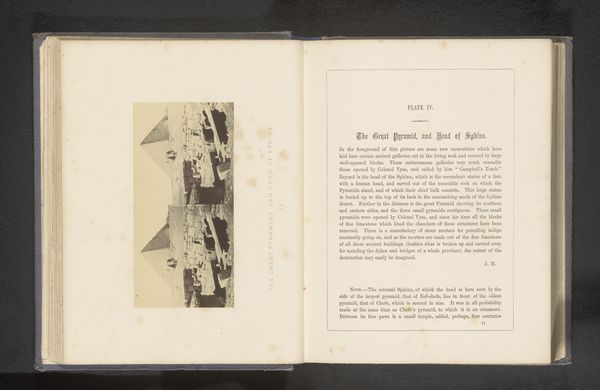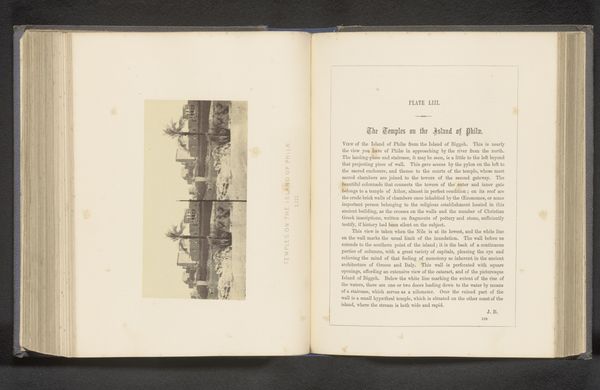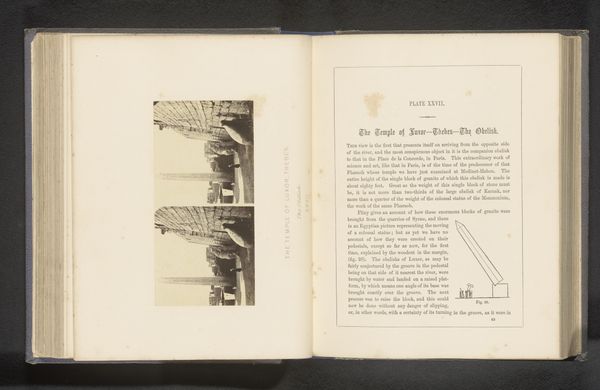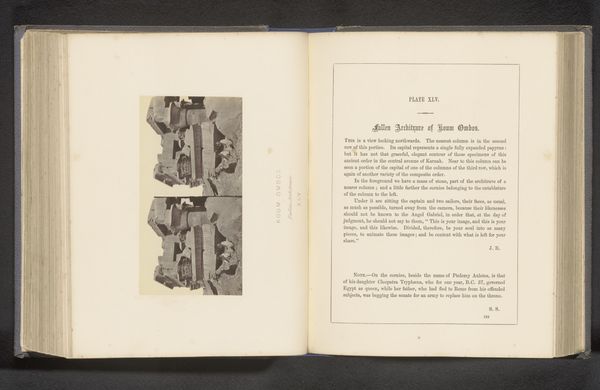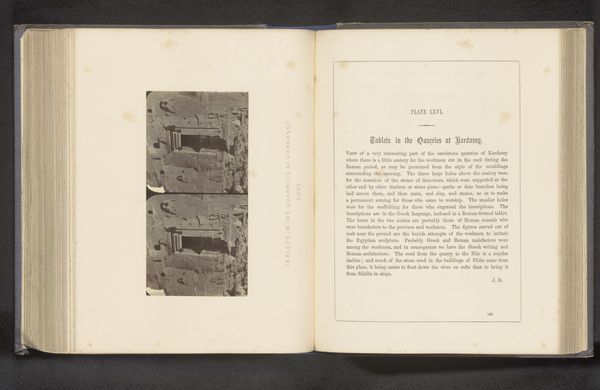
print, photography, gelatin-silver-print
# print
#
landscape
#
ancient-egyptian-art
#
photography
#
ancient-mediterranean
#
orientalism
#
gelatin-silver-print
#
history-painting
Dimensions: height 76 mm, width 144 mm
Copyright: Rijks Museum: Open Domain
Curator: Here we have Francis Frith’s “Gezicht op de tempel van Isis en Serapis,” a gelatin silver print taken before 1862, depicting a view of the temple in what appears to be a mirrored stereo image. It is part of the Rijksmuseum collection. What are your initial impressions? Editor: Desolate, utterly desolate. The stark contrast between the ruined temple and the empty landscape evokes a profound sense of loss and abandonment, amplified by the mirror-like symmetry that feels somewhat staged, even manipulative. Curator: Indeed, the mirror effect invites a dual reading of the same image. It also emphasizes the repetitive nature of the architectural forms but doubles the ruin. It’s fascinating how Frith uses photography here to engage with memory and the visual legacy of a lost civilization. The temple itself speaks volumes. Isis and Serapis were key deities... Editor: Yes, but think about it – this image, while seemingly documenting an ancient site, also participates in the 19th-century colonial gaze. The very act of photographing, collecting, and displaying these images in European institutions reinforces a power dynamic, a narrative of ownership over Egyptian history and culture. How might indigenous people perceive this image? Curator: That's a critical point. And this relates to the wider visual vocabulary of Orientalism, prevalent in that period. The light, composition—there is a sense of romance attached to that ruin… perhaps Frith’s approach aims to reconcile the classical past with a British sensibility, finding aesthetic pleasure in it. Editor: That supposed reconciliation elides the violence inherent in such enterprises. Images like this often omit the messy realities of excavation, the displacement of people, the plunder of artifacts, conveniently reducing a vibrant living culture into a romanticized relic for Western consumption. It ignores all of that! Curator: Your viewpoint highlights the necessity of constant critique and re-evaluation when dealing with historical images, particularly those touching upon cross-cultural interactions. It serves as a potent reminder to question whose stories are amplified and whose are silenced. Editor: Absolutely. Frith’s photograph is both an aesthetic object and a complex document, entangled with social, political, and historical currents of its time, challenging us to look beyond the surface and confront uncomfortable truths about representation and power. It is always so much deeper.
Comments
No comments
Be the first to comment and join the conversation on the ultimate creative platform.
